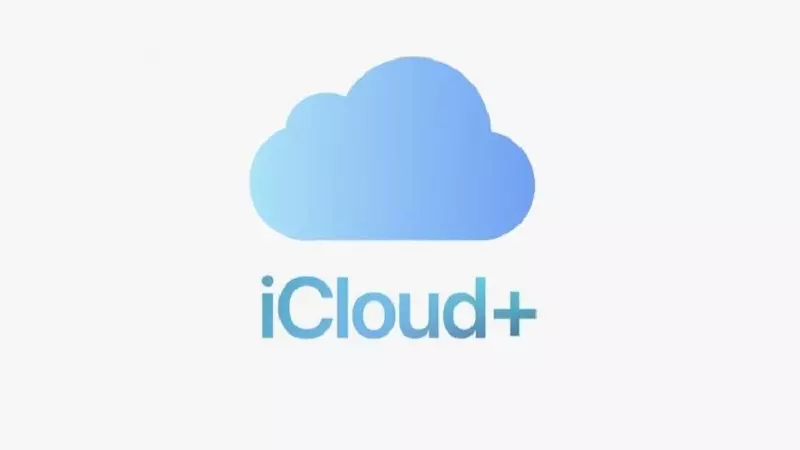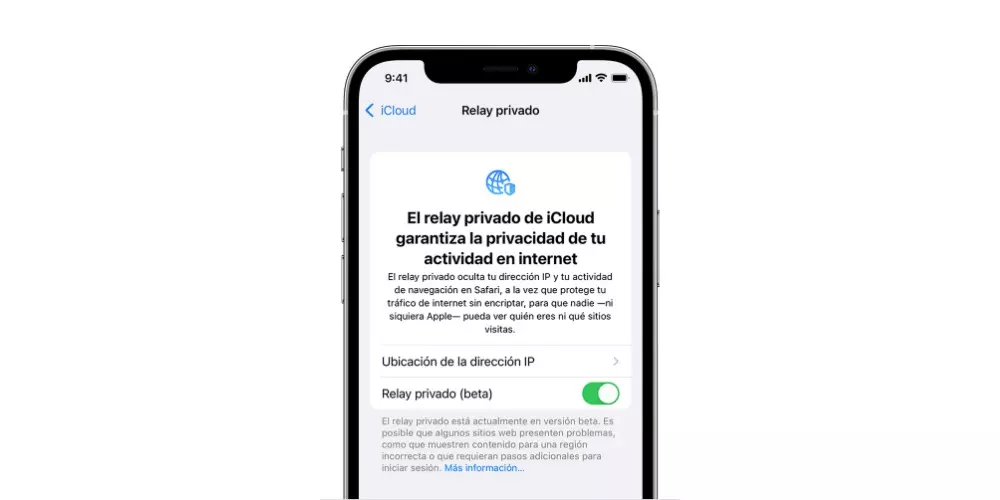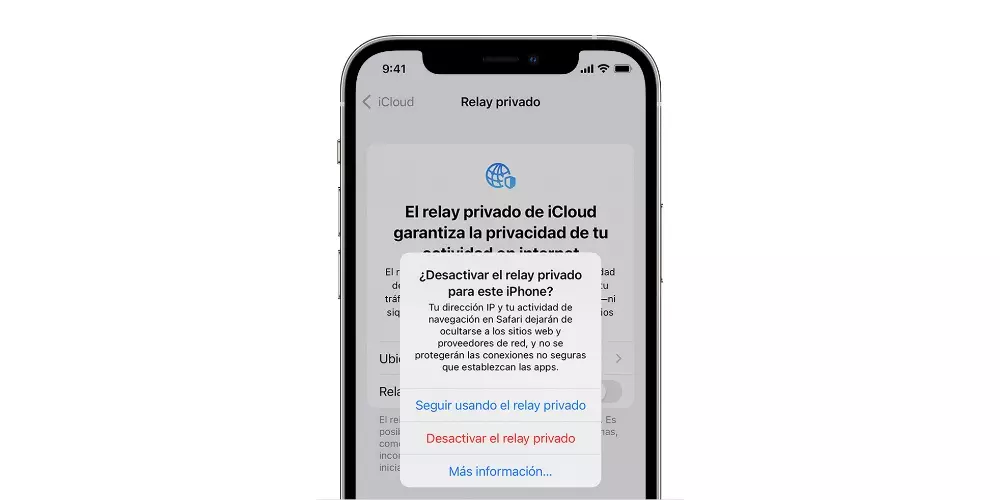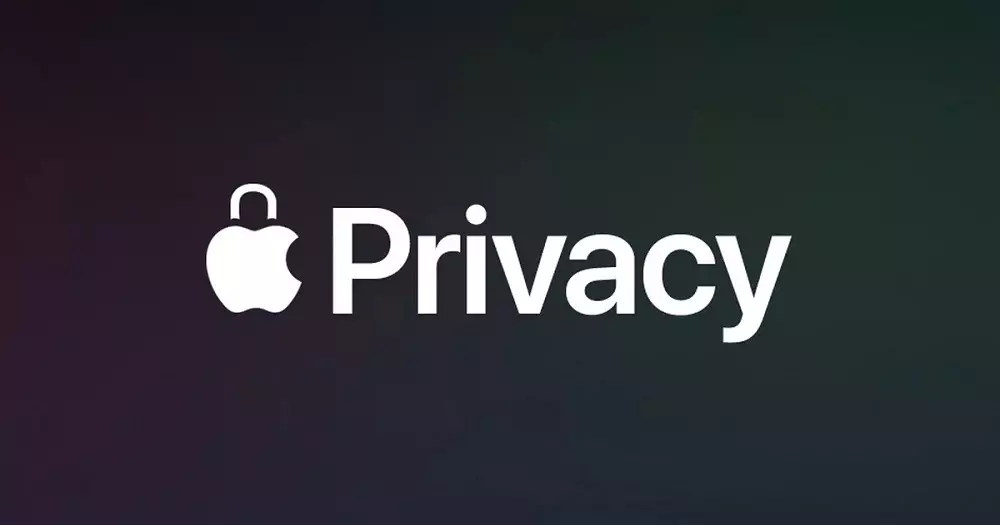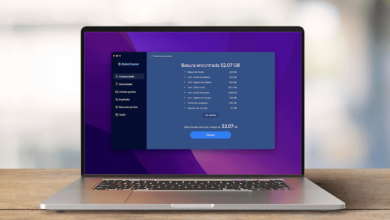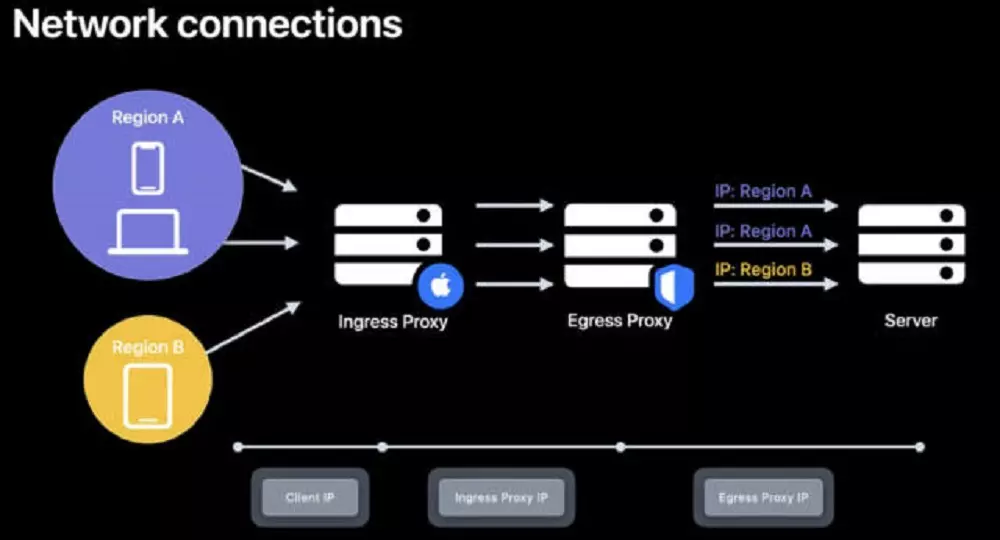
In this case, when the Private Relay is activated, the requests are sent through two servers that are independent and secure. The first of the servers that Apple manages will display your IP address. But the really important thing is that DNS records are encrypted, and this will prevent anyone from accessing the address of the website you are trying to visit. In the case of the second server it is managed by a external content provider that generates a temporary IP address. This will decrypt the website you have requested and create the connection.
In this case, the temporary IP address will not be associated with your user. This will make it impossible to track all the traces you are leaving on the network. Privacy will be fully assured, and the browsing experience will continue to be at the highest speed standards. Although as we will see, there are some limitations in terms of speed by having to perform a double verification system with two servers.
Compatible devices and requirements
Of course, this is a feature that is not universally available. It should be noted that if you want to start using it, you will only be able to do it in a iPhone, iPad, or Mac. In this way, the Apple Watch or the Apple TV itself is completely ruled out. But you have to be realistic. The most common connection made through Safari is always on a Mac or iPhone/iPad. But beyond this, a software version must also be available. Specifically, Private Relay landed in the teams with iOS/iPadOS 15, and macOS Catalina. In this way, to be able to use this feature you will have to have this version or a higher one.
But it’s also a feature that makes having a storage plan with Apple much more meaningful. Basically, it is known that the company offers a 5 GB iCloud Drive plan, which can be very limited when you want to store high-quality photos or videos. In this way, you can hire extra space with iCloud+ which starts from 50 GB. But beyond the extra storage in the cloud, it also has this Private Relay feature and also hides the email or custom domain.
In short, as requirements it is required to iOS/iPadOS 15 or macOS Catalina or higher. In addition, you must also pay monthly or annually a iCloud+ subscription (also compatible with the subscription made with a Family plan).
Activate Private Relay
By default, this is a feature that is disabled by default. That is why it must proceed to activate it in case you want to be completely sure in your internet browsing. To be able to do it on an iPhone or iPad, you simply have to follow the following steps:
- Go to Settings.
- Click on your name at the top.
- Go to the iCloud section.
- Click on Private Relay and activate the option that will appear.
It should be noted that previously, it is important to read all the information that can be found in this aspect to be completely sure. And as we said before, you will also be able to find this feature for all Macs that are compatible. In this case, to activate it you will have to take the following steps:
- At the top, tap on Apple.
- Go to System Preferences.
- Click Apple ID.
- Select Private > iCloud Relay.
In both cases, you will also be able to touch the location of the IP address. In this case, you will be able to select numerous aspects related to the privacy of the IP address. You will be able to find two different options that are the following:
- Keep general location allows websites to show you localized content in Safari, but your IP address remains hidden.
- Use country and time zone provides a less precise location of your IP address, but still indicates your country and time zone.
If a website does not work in Private Relay
Obviously some websites, as we will see later, are not adapted to Private Relay. This may end up causing some websites, networks, or services to not work properly, requiring an update from the developer. This can be seen especially on websites that require monitor and filter network traffic (such as business networks or those used in educational centers), but also if the parental mode that restricts access to information is activated. Also, it should be noted that this function is not available in all countries. If you travel to one of these, it will be automatically deactivated.
In the event that a website or service does not work properly, you will be forced to deactivate it temporarily in iCloud settings. This is something that is done by following the steps seen before:
- On your iPhone, iPad, or iPod touch, you can turn off iCloud Private Relay in Settings > [tu nombre] > iCloud > Private Relay.
- On your Mac, choose Apple menu > System Preferences, then click Apple ID. Select iCloud Private > Relay.
Other relevant aspects
Keep in mind that beyond everything discussed throughout this iCloud Private Relay article, we must also highlight the speed tests that have been carried out and also the resources for network administrators. A priori, it should be noted that these functionalities act between the connection of the device and also the server and this may imply different relevant aspects such as speed. We analyze it below.
speed tests
As we have commented throughout the entire article, the Private Relay function, which is integrated with the iCloud+ subscription, allows you to have a completely secure connection. It applies to both performance as well as the privacy of all the information that is sent through the internet network. It can be said that there is an impediment in the network, and this design makes it possible to end up affecting the way in which the transfer rate is reflected in the speed tests. The simplest thing is to do a speed test just before activating this mode, and another test when activating it. What will be appreciated is that in the second case the speed will be reduced.
But this is something that can end up changing completely, since different connections will be opened simultaneously. In general, the data transfer rate will be reduced, both in the upload and download speeds. Although it must be borne in mind that the browsing experience will continue to be completely fast and private. This is mainly because the speed difference is really low, and only the keenest eye will be able to identify the variation.
Apple offers tools to developers
Obviously with iCloud Private Relay it will directly interfere with the connections made to web pages. In the event that you are a developer, you should know that the Cupertino company offers different tools to quickly adapt to these security and privacy systems. Specifically, Private Relay protects web browsing through DNS resolution queries and insecure http application traffic. The company to help developers allows reports that iCloud Private Relay uses QUIC, a new standard transport protocol based on UDP. QUIC connections in Private Relay are configured using the port 443 and TLS 1.3,so you’ll need to make sure your network and server are ready to handle these connections.
Likewise, the company also reports that different techniques are applied that are focused on abuse and speed limitation. In this way, it is always guaranteed that only Apple devices that are valid will make use of this feature. Also, the relay IP address will remain stable throughout a browsing session from a device. That is why as a developer you are going to have to update the traditional fraud detection that is based solely on IP addresses. This is why it is recommended to treat the addresses as larger operations level NAT or business IP addresses.
On the Apple website you will be able to find different documents to be able to adapt to this feature. Likewise, you should know that the Cupertino company has a great forum that has a community behind it whose mission is to help users solve all the problems that arise.
